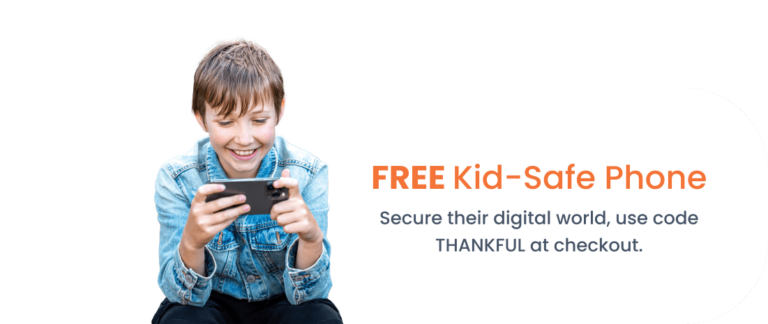Why we need to change the conversation around screen time and youth.
Posted on www.psychologytoday.com February 11, 2020 | Reviewed by Abigail Fagan
This post was co-authored by Betsy VanDenBerghe, a writer specializing in family issues.
I recently attended a standing-room-only parents’ night at a junior high featuring a renowned and polished speaker. He deftly captivated the packed auditorium with a fear-based, trouble-in-River-City presentation with which many parents are now familiar: social media leads to suicide and Snapchat is the devil. Take away the phones and drastically cut screen time.
Such meetings can inspire palpable fear and panic in parents. Yet the results of high-profile studies, including a recent meta-analysis and the findings of some of my own research, should give them pause.
Contrary to conventional wisdom, a weak to non-existent link exists between social media and mental health. For example, a major recent study found that screen time only accounted for 0.4% of the variance associated with mental health (comparable to the effect of eating potatoes on depression). These questions encouraged me to conduct my own research, examining the effect of time spent on social media on mental health over eight years. Our results found that there was no effect of time spent on social media on either depression or anxiety across the course of adolescence and into emerging adulthood.
Given these findings, it’s time to change the conversation around social media.
Social media can be used proactively in healthy ways that uplift and motivate, and it can also be used in passive, lurking ways that lead to discouragement and isolation. What matters, at least for mental health, is not necessarily the amount of social media time spent, but the way social media time is spent. Telling our kids to “put down the phone” is about as helpful as taking away their car keys instead of teaching them how to drive.
Enough research exists at this point to differentiate between positive and negative uses of social media, so I’ll illustrate both sides with two hypothetical teenage girls, Emma and Olivia. They both spend the same amount of time on their phone, but when Emma puts her’s down, she feels anxious and depressed, while Olivia walks away feeling happy and motivated.
In the first place, Emma’s parents gave her a phone with few instructions when she got to middle school: just don’t take it to bed or use it during class time. Olivia’s parents, however, gauged their daughter’s readiness and maturity before putting her on their phone plan and then checked in daily, then weekly, to help her maneuver online interactions with the goal of becoming purposeful, mindful, and active.
Of the two ways to interact on social media, Emma chooses to be passive. Lurking and scrolling, she rarely comments or interacts, just spends hours observing friends, acquaintances, and strangers go to parties she didn’t know about or take trips her family can’t afford. By contrast, Olivia chooses to be active, cheering on or commiserating in comments and responding to those who comment on her posts. Research suggests that active use of social media is actually productive for mental health, decreasing mental health symptoms by 15%. Comparatively, passive use increases depressive symptoms by 33%.
Because Olivia’s parents had helped her become intentional and mindful on social media, she approaches it with goals in mind such as information seeking or connecting with extended family. Again, research concludes this deliberateness is a healthier approach than reaching for a phone out of boredom or habit.
Emma, conversely, gravitates to social media purposelessly and habitually, the hours lapsing in a stupor. Olivia, though, evaluates whether she’s feeling negative or positive emotions after a certain interval and quits if feeling depressed, or if it’s getting close to bedtime. Emma just keeps on scrolling, even if it goes late into the night. While sheer time on social media doesn’t appear as important as previously thought, time spent displacing sleep definitely has negative physical and mental health consequences.
Because Emma continues representing negative tendencies, according to research she is also more prone to make social comparisons, thus experiencing some of the worst outcomes of social media use. Emma dwells on those she considers her betters, or “upward comparisons,” constantly thinking, “I wish I were as pretty, smart, popular, athletic, or thin, etc. as her!” On the positive outcome side, however, Olivia has learned to recognize and retreat from thoughts of, “I wish I were her” and settle into the empathetic mindset of “She has struggles, too” or, “Things are missing from this perfect picture” or, “How can I connect better with her as a human being?”
Finally, Olivia gave up trying to put on a perfect show after her parents pointed out that connecting with others through supportive interaction brings more fulfillment than impressing peers. Research also supports this approach, suggesting that prosocial behavior, compassion, and deliberative action online correlate with better mental health. Olivia finds meaning and connection in sharing her authentic self and (judiciously) describes downs along with the ups.
At this point, let’s give our hypothetical Emma a break and say her parents read this article and began having some time-consuming conversations about social media interactions, contacts that make her feel depressed, and the image she chooses to project. With time, guidance, and patience, Emma gradually develops a healthier approach that involves five crucial social media approaches:
- Being active instead of passive.
- Being purposeful and mindful of emotions.
- Being smart about sleep.
- Limiting social comparisons.
- Using social media less as a show and more to connect with and build others.
Shortly after the birth of my fifth child, I described on Instagram several traumatic events my family had recently undergone. They included my two painful surgeries followed by my husband’s nearly fatal pulmonary embolism and, three months later, an accident in which he lost several fingers with a table saw. An outpouring of beautiful and supportive messages lifted us. Not only that, but people showed up to babysit and do my laundry. Friends I hadn’t seen since high school stopped by with freezer meals. Posting about our reality not only gave others insight into our struggles and lifted us but lifted those who felt good about doing something to help our struggling family.
Changing the conversation about screen time from one of fear and limitations to one of empowerment and education enables our children to experience this sense of connection. Social media is not going anywhere. Teaching our kids to stay on the positive side of the road may not prevent all accidents, but it will better their chances of mental well-being while navigating their online worlds.


